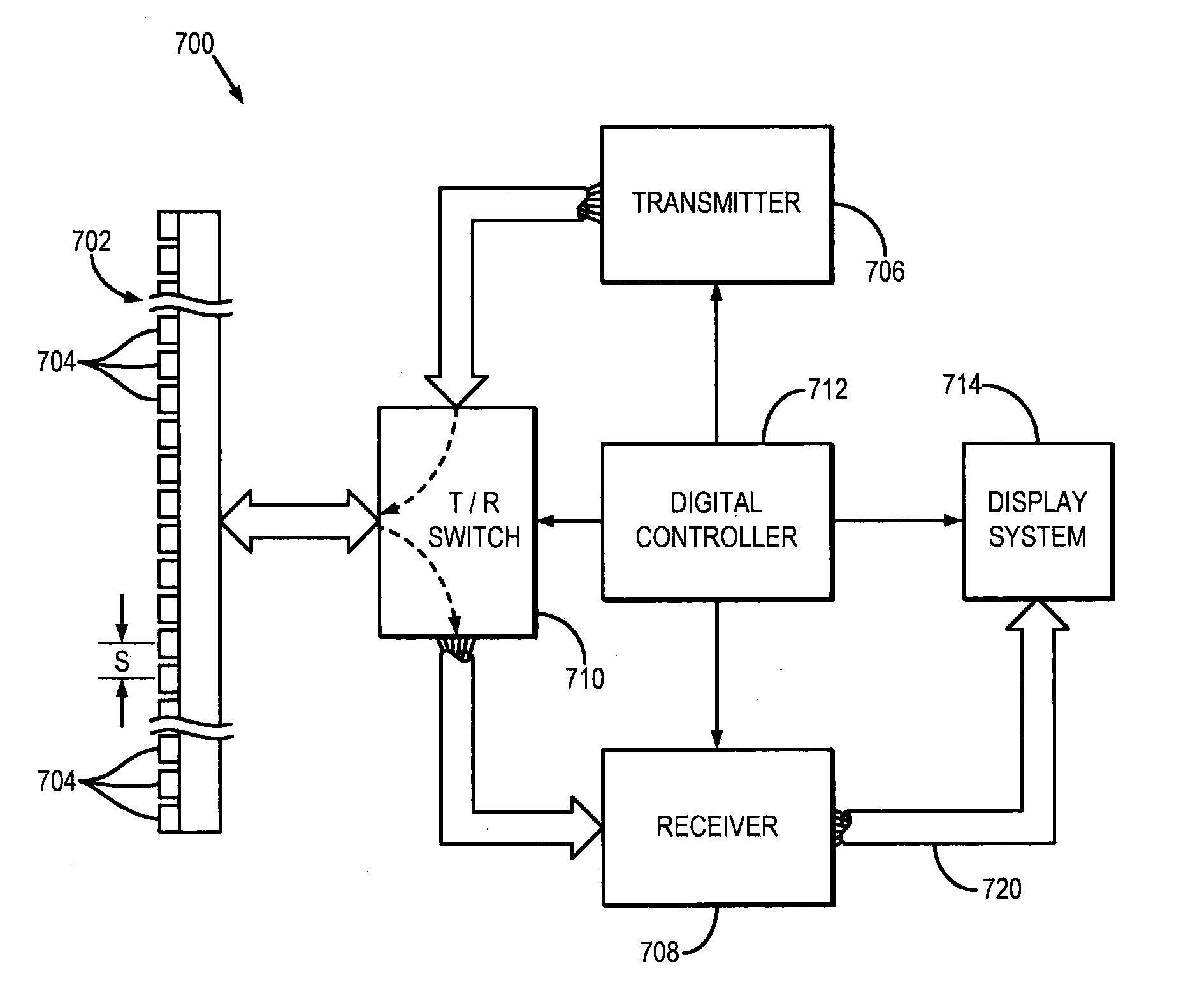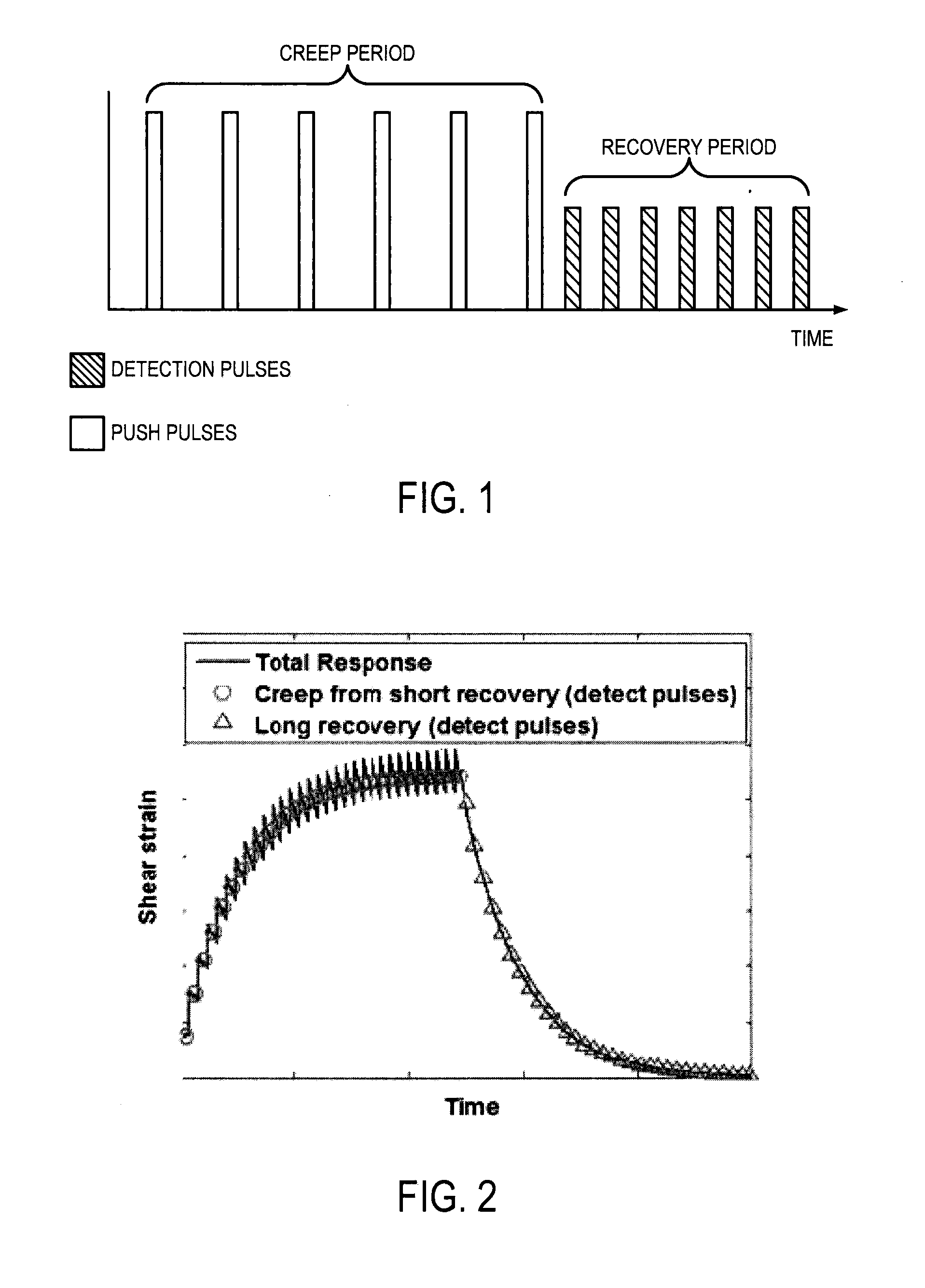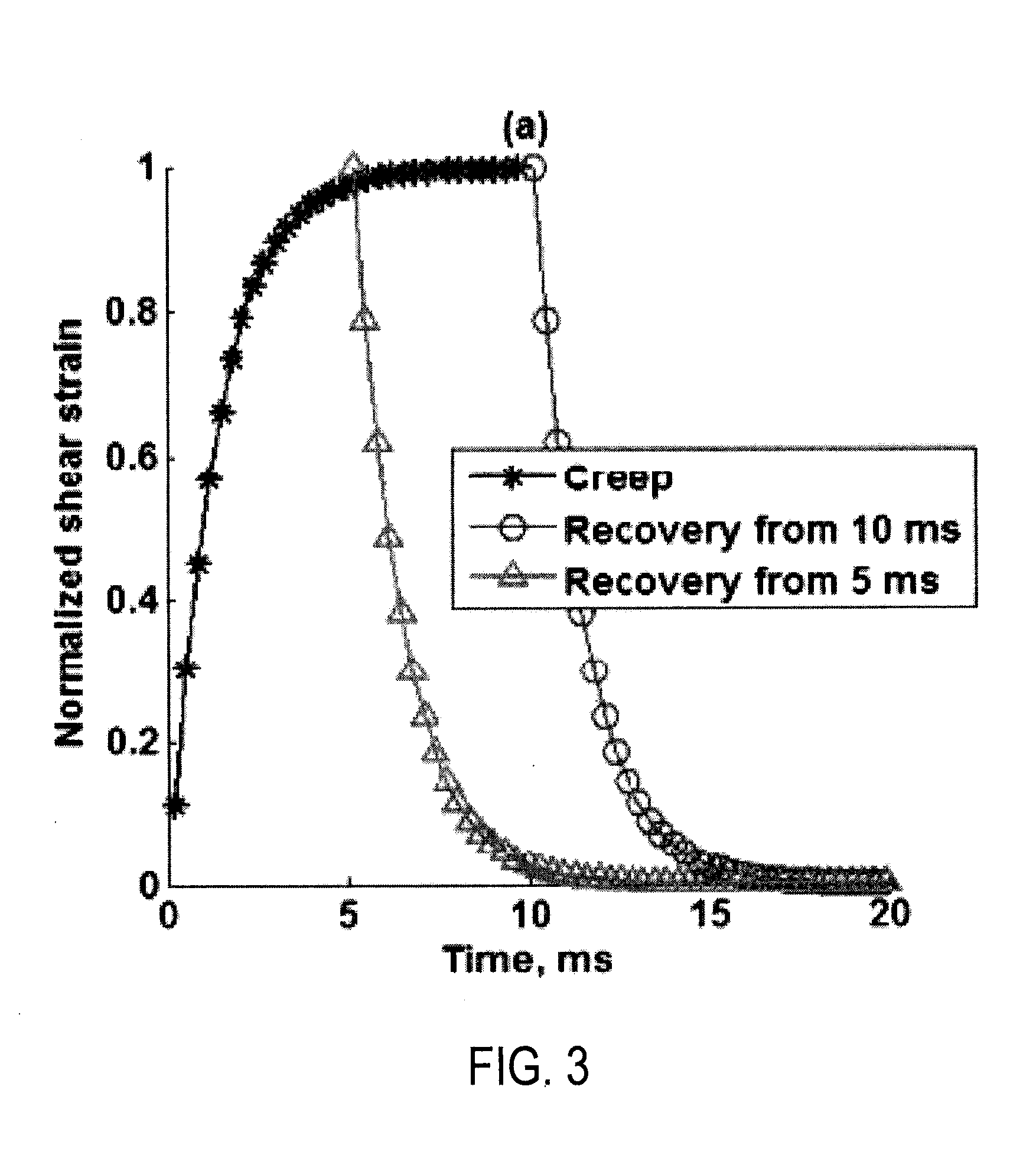System and method for acoustic radiation force creep-recovery and shear wave propagation elasticity imaging
a technology of elasticity imaging and acoustic radiation, applied in the field of systems and methods for medical imaging using vibratory energy, can solve the problems of rheological models not describing the material behavior at all frequencies, the difficulty of measuring shear wave attenuation in the field of elasticity imaging, and the undesirable amount of computational burden on the quantification process
- Summary
- Abstract
- Description
- Claims
- Application Information
AI Technical Summary
Benefits of technology
Problems solved by technology
Method used
Image
Examples
Embodiment Construction
[0022]Described here are systems and methods for model-independent quantification of tissue viscoelastic properties by estimating a complex shear modulus from a time-dependent creep-recovery response induced by acoustic radiation force. A creep response is generated and data is acquired during a recovery period following the creep response, as illustrated in the example pulse sequence in FIG. 1. In this approach, the creep response is generated using either multiple push pulses each having a short duration, or a continuous push having a long duration. Generating the creep response using these techniques overcomes the problem of exceeding FDA limits of mechanical index (“MI”) during creep period. The push pulses generate a temporal step-force, and following the cessation of the push pulses there is a recovery period, as illustrated in FIG. 2, during which data is acquired using detection pulses. In addition to the creep response, shear waves are also generated outside the focal area....
PUM
 Login to View More
Login to View More Abstract
Description
Claims
Application Information
 Login to View More
Login to View More - R&D
- Intellectual Property
- Life Sciences
- Materials
- Tech Scout
- Unparalleled Data Quality
- Higher Quality Content
- 60% Fewer Hallucinations
Browse by: Latest US Patents, China's latest patents, Technical Efficacy Thesaurus, Application Domain, Technology Topic, Popular Technical Reports.
© 2025 PatSnap. All rights reserved.Legal|Privacy policy|Modern Slavery Act Transparency Statement|Sitemap|About US| Contact US: help@patsnap.com



